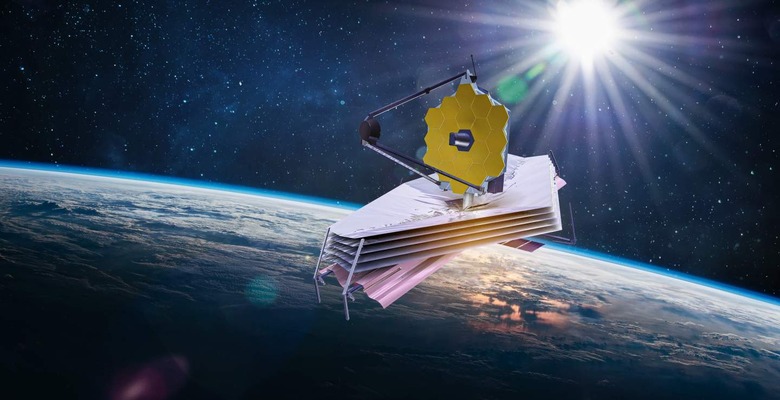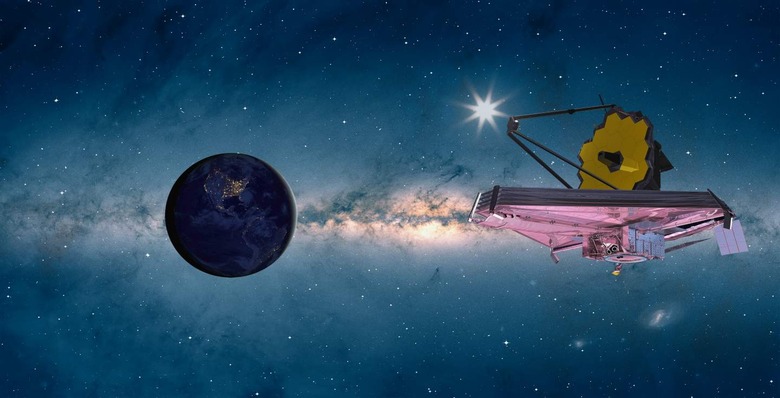Webb's telescope only just launched, but it's already surpassing expectations
The James Webb Space Telescope (JWST) had a delayed launch, but it seems that all that extra work was not in vain. According to NASA, the launch went so well that as a result, the expected lifespan of the telescope just went up. Thanks to excess fuel, NASA now predicts that JWST may significantly surpass its initial science lifetime.
If proven true, the gains may be quite substantial. Webb's telescope has a minimum lifetime expectation of five years, but even prior to this discovery, NASA stated that we can expect it to support operations for up to 10 years. With the latest findings, it's possible that the telescope will surpass all expectations and continue to function for much longer than even the generous initial 10-year prediction.
The team behind the Webb telescope has analyzed its trajectory after the launch on December 25, 2021. Since the launch, the telescope has already gone through two mid-course correction maneuvers, giving the analysts further data as to how much propellant JWST is using to operate and reach its final destination around 1 million miles away from Earth.
Based on the latest analysis, NASA has learned that the telescope requires less fuel than originally planned. The main propellant savings stem from the fact that NASA overestimated how much fuel would be required to correct Webb's trajectory. This makes perfect sense, as in a mission that requires as much precision as this one, it's better to err on the side of caution.
Webb's successful launch saved a lot of fuel
NASA went on to describe in greater detail what exactly allowed Webb's telescope to save so much fuel during its long-awaited launch and travel period. The telescope has reserves of rocket fuel onboard that it uses for several critical tasks. Rocket fuel is required for course correction, insertion into orbit at its destination, maintaining the telescope's orientation in space, and something that NASA refers to as "station keeping maneuvers." This refers to adjusting Webb's orbit through the use of small thruster burns.
According to NASA, JWST managed to retain a lot of propellant due to how precise the Arianespace Ariane 5 launch was. The two mid-course correction maneuvers that followed the launch were both successful. As both the launch itself and the course corrections exceeded NASA's initial expectations, the observatory has a lot of leftover fuel to use up in the years to come.
Webb's telescope beats NASA's expectations in more ways than one, and we're only a few days into the launch. The deployment of the telescope's solar array was set to be executed automatically based on one of two conditions: When JWST reached the ideal attitude toward the Sun in order to power the observatory, or upon hitting the 33-minute mark after launch. Webb managed to reach the correct attitude just 29 minutes after launch, further saving time and fuel.
What's next for the James Webb Space Telescope?
NASA offers live updates on how Webb's telescope is currently doing. It still has a long way to go before it will reach its new home at a place called the second Lagrange point (L2) located around 1 million miles away from Earth.
L2 is on the far side of the Earth and it offers the required gravitational balance between our planet and the Sun. That is where Webb's observatory will settle into orbit and then remain there for the years to come.
The state in which the telescope was launched into space on Christmas Day is much different from its so-called final form. As JWST was initially folded, there are many steps to complete on its way to orbit. Along the way, the telescope will continue to unfold until it reaches the state that will allow it to peer into deep space.
NASA stated that all future deployments are human-controlled to allow flexibility and extra precision. You can see what's in store for the James Webb Space Telescope on NASA's website.


